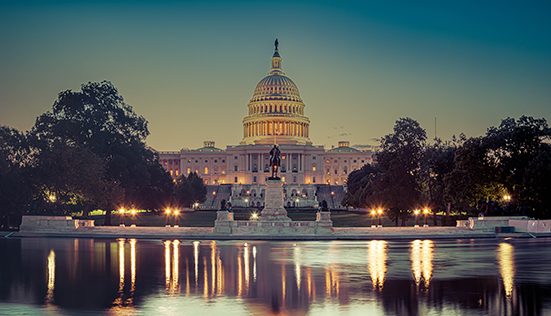March 5, 2024 (This story appeared in the March 2024 Edition of American Motorcyclist)
By Joy Burgess
Last month we looked back at some of the AMA’s historic legislative wins over the past century, including the creation of the AMA Legislative Department, and one of the most intense political-action campaigns in motorcycling’s history — fighting attempts to eliminate ORV use on public lands in 1977.
It’s important to note that in 1978, the Legislative Department name was officially changed by the AMA to the Government Relations Department (GRD) — the name it still has today — to better reflect the broad scope of activities and regulatory issues taken on by the team.
EPA APOLOGIZES TO MOTORCYCLISTS
In 1977, the U.S. Environmental Protection Agency (EPA) put out a publication called Noise on Wheels with the intent to raise awareness of noise issues that could potentially lead to hearing damage. The pamphlet included a section on motorcycles, along with a chart based on competition noise level testing it had done six years previously, and implied that the figures represented noise levels emitted by modern street motorcycles.
The AMA has maintained a position against excessive sound from its inception, saying in its Excessive Motorcycle Sound Board Position Statement that “few other factors contribute more to misunderstanding and prejudice against the motorcycling community than excessively loud motorcycles. Attempts to regulate sound often miss the mark by singling out motorcycles with ordinances and laws that are unfair, impractical and unenforceable. Motorcyclists have a responsibility to be part of the solution by being sensitive to community standards and respectful of their fellow citizens.”
This obvious misuse of scientific data in the publication resulted in protests in late 1977 and ’78 from the AMA and additional organizations in the motorcycling community, primarily because it did indeed contribute to “misunderstanding and prejudice.” The AMA called out the EPA, calling Noise on Wheels “vague, misleading and overzealous,” as well as inflammatory and unqualified.
Both the AMA and the Motorcycle Industry Council (MIC) requested that the EPA cease circulation of the document, and the AMA took its protests even farther, asking that steps be taken to correct the false impressions against motorcyclists generated by the publication.
The EPA quickly responded, saying in a letter to the AMA, “We have been aware that there were problems with some of the material in the pamphlet. Consequently, the Agency has discounted distribution of the pamphlet and has destroyed all remaining copies. We sincerely regret any problems or inconvenience the pamphlet has caused you or your membership. Let [us] extend an official apology on behalf of the Agency for allowing a publication to be distributed that did not portray motorcycles and their riders in the proper perspective…”
AMA “Storms” Washington to Protest EPA
Obviously not learning from its previous errors, the EPA in 1978 considered the adoption of stricter noise standards for motorcycles to be implemented in 1980…and once again the AMA’s GRD team led the fight to make sure new standards wouldn’t adversely impact the cost of new bikes.
The EPA’s proposed regulations called for a five-year reduction in new motorcycle noise levels. To make that happen, the EPA planned to “certify” each new bike’s noise level at a cost passed along to buyers, which would be $200-400 per motorcycle.
In a public hearing on the issue, EPA spokesperson Jill Lucas cited “EPA studies” that supposedly showed motorcycle noise to be among potential causes of ruined hearing, high blood pressure, birth defects and viral infection.
AMA members and staff put the heat on, resulting in Lucas being fired a week later, and shortly after the AMA testified to the EPA in opposition to the regulations, reminding them of the AMA’s 30-plus-year history encouraging quiet motorcycling.
The AMA exposed the EPA’s plan to its members, and AMA members flooded the EPA with mail in what the August 1979 edition of American Motorcyclist called “the largest outpouring of citizen response in the entire history of the [EPA].”
With nearly 60 percent general opposition and nearly 90 percent opposition from motorcyclists, the EPA buried the proposed regulations; no one at the EPA wanted to talk about motorcycles.
Not surprisingly, in 1979 the EPA released a report on how its regulatory activity was going to affect then-President Carter’s anti-inflation program. Within that report the AMA found buried the agency’s plan to continue with its motorcycle noise regulations…except now they were going to cost a whopping $224 million, a significant 12 percent increase over the estimates released in 1978.
Despite the public outcry, the EPA planned to charge ahead with its costly regulations, so the AMA felt it was time to go over the head of the non-elective bureaucracy, announcing in American Motorcyclist that it “stormed” Washington D.C. to protest the EPA and its overreach.
GRD staff presented a cost-benefit analysis in testimony to Congress, saying, “We have been trying to deal with the EPA on this issue since March 15, 1978. We now feel it is time to bring these facts to members of the United States Congress…Throughout public comment on these proposed regulations, one commentor said, ‘These regulations are the classic example of swatting a fly with a sledgehammer.’ I would add that it may well be a gold-plated sledgehammer, originally estimated by the EPA at $200 million per year, recently revised by the EPA upwards to $224 million per year. This money will come right out of the pocket of the American motorcycle owner…For these reasons we appeal to you today to help us convince EPA of its disastrous course. We feel the agency has not listened to us. Surely it will listen to you.”
Unsurprisingly, the battle between the AMA and the EPA — surrounding sound and additional issues like, later, E15 sales — was far from over. But more on that coming soon!
While the AMA fights tirelessly for your rights, don’t forget that we need your help, too! Sign up for action alerts from the AMA at https://americanmotorcyclist.com/action-center/.






